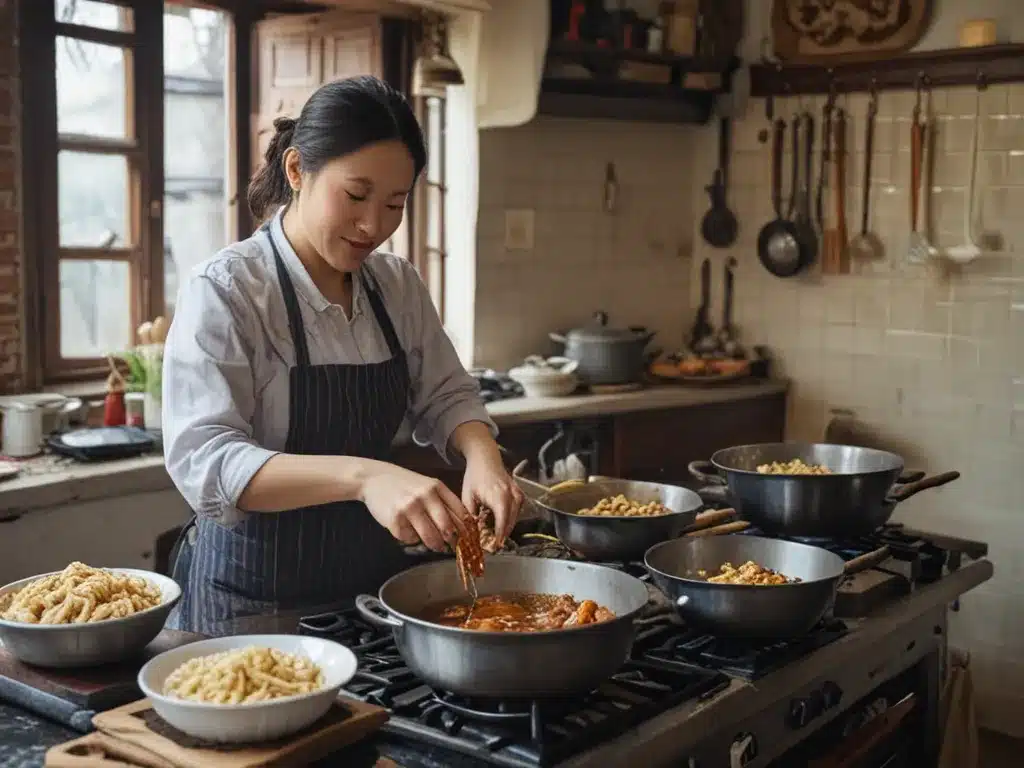
Choosing Ingredients Mindfully
As I start planning meals, I focus on selecting ingredients that have a lower environmental impact. Many traditional Chinese dishes rely on vegetables, beans, grains, and small amounts of meat or seafood. These plant-forward ingredients usually have a lighter carbon footprint than beef or other heavily processed foods.
When choosing proteins, I opt for vegetarian options like tofu, tempeh, or dried shiitake mushrooms as often as possible. If using meat or seafood, I select items that are sustainably and locally sourced when available. For example, locally caught shellfish have a lower carbon footprint than imported varieties. I also avoid overly processed packaged items and instead choose fresh or minimally processed ingredients.
No matter what dishes I’m cooking, I make sure to use all parts of the ingredients to reduce food waste. Leftover vegetable scraps can be saved for homemade stock. Bones from meat or seafood are used to flavor the stock as well for maximum nutrition and minimal waste. Proper meal planning is key to avoiding throwing out excess ingredients.
Preparing Meals Efficiently
as h3 Producing less carbon emissions requires optimizing how I cook. I strive to use appliances and techniques that require less energy.
as h3 Instead of deep frying foods which uses a lot of oil, I opt for baking, steaming, or stir frying which uses minimal oil. When stir frying, I heat the pan until very hot before adding ingredients to quickly seal in flavors and juices while limiting cooking time and therefore energy usage.
as h3 Whenever possible, I cook multiple dishes simultaneously. For example, steaming rice and vegetables together in a single pot, or roasting protein and vegetables on the same baking sheet. This allows me to make a full meal with fewer single-use appliances and less time spent preheating ovens or stovetops. Proper planning of recipes lets me organize cooking efficiently.
Adaptating Recipes for Sustainability
as h3 Many classic Chinese recipes can easily be made more sustainable with small adjustments. For instance, braised dishes traditionally use a generous amount of oil which produces more emissions during cooking. I’ve found that using half the usual amount of oil yields flavorful results while cutting carbon footprint in half.
as h3 Meat can also often be reduced or replaced. Stir fries like Kung Pao Chicken normally feature chopped chicken or shrimp as the star ingredient. But experimenting with more vegetarian versions centered around tofu, broccoli or beans instead produces delicious meals with a lower environmental cost. Even substituting 25% of the meat achieves meaningful reductions.
as h3 Traditional cooking methods themselves can be optimized. Stir frying over high heat seals in moisture and favors, so I find I don’t need to braise ingredients in oil for hours as some recipes suggest. Testing modified techniques helps me reinvent classic dishes to be both traditional and sustainable.
Enjoying Homemade Fare Over Take Out
as h3 While the convenience of delivery cannot be denied, take out ordering generates significant carbon emissions from packaging, transportation and single-use containers. I’ve found that planning classic Chinese meals at home provides delicious results with a far lighter footprint.
as h3 Cooking meals from scratch allows me to control ingredients and techniques. I can select local, seasonal produce and sustainably-sourced proteins to assemble nourishing dishes. Preparing multiple portions at once means enjoying leftovers without generating new emissions from extra cooking every night.
as h3 Even simple dishes like stir fries and soups come together rapidly when ingredients are prepped ahead. Taking just 30 minutes on a weekend to chop vegetables and portion proteins sets me up with easy, zero-waste meals for the week. Focusing time into more substantial home cooking replaces frequent deliveries and provides comfort while caring for the environment.
Adapting Traditions for a Sustainable Future
Whether enjoying beloved recipes handed down over generations or putting a creative spin on classics, cooking traditional Chinese fare presents opportunities to care for the planet. Making mindful choices supports both continued cultural traditions and environmental wellness long into the future. Adjusting techniques and ingredients allows cherished dishes to evolve sustainably for generations to come.






